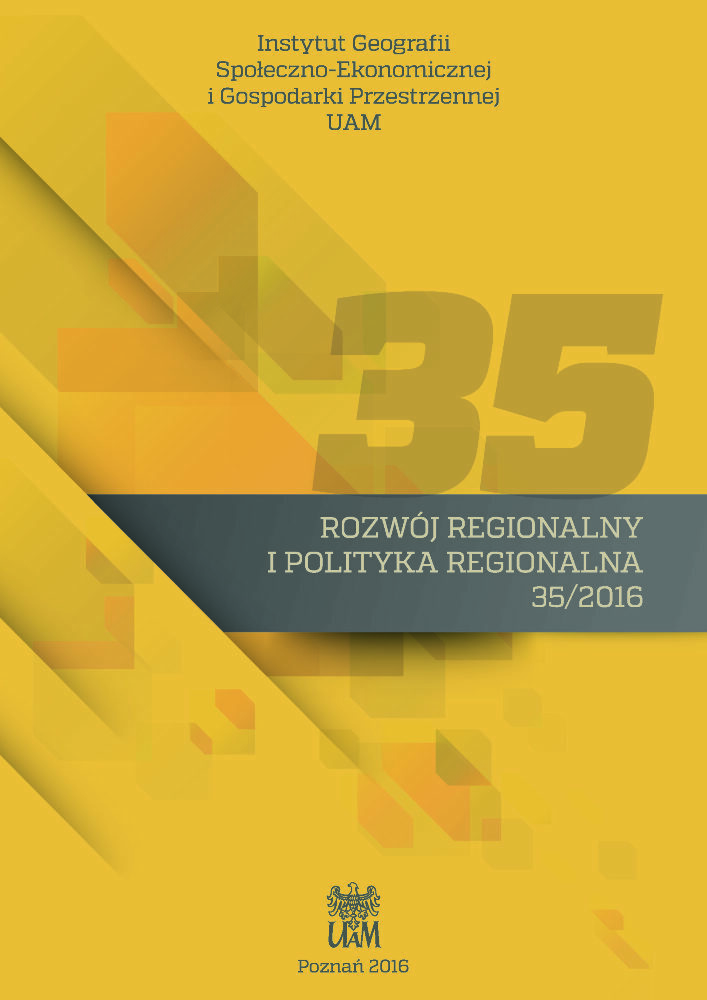Abstrakt
Changes in the attitude of local authorities towards the public participation in the decision making processes have prompted development of new methods of such involvement. As far as the urban planning is concerned, of particular potential is the so-called Public Participation Geographic Information Systems (PPGIS). One of the tools used for the purpose is a geo-questionnaire, combining the benefits of a standard questionnaire and a map, which permits collecting information on particular sites and on the respondents’ ideas on localisation of new objects and functionalities.
Within the project “Geoportal supporting public participation in urban planning”, in the years 2015–2016, a study was undertaken to explore the effectiveness and usefulness of the geo-questionnaire. Five pilot studies were performed in the Poznań and Łódź agglomerations. The geo-questionnaires concerned the local spatial management plan in Rokietnica (Poznań agglomeration), landscape protection in Łódź, conception of the transportation system development in Łódź, conception of urban design of the Łazarski Market in Poznań, and the Map of Local Needs in the city center of Poznań. The aim of the study was to present the preliminary results of the initial implementations of geo-questionnaire developed within the project Geoportal supporting public participation in urban planning. The applications of geo-questionnaire have been analysed taking into account the characteristics of implementation areas, characteristics of users, the effectiveness of recruitment methods and opinions about the tool from two points of view: the respondents and the recipients of results.
Bibliografia
Arnstein Sh.R., 1969. A Ladder of Citizen Participation. Journal of American Planning Association, vol. 35(4), pp. 216–224. DOI: https://doi.org/10.1080/01944366908977225
Bąkowska E., 2016. Zastosowanie metody projektu wykorzystującej narzędzia PPGIS w procesie kształcenia na kierunku gospodarka przestrzenna. Biuletyn KPZK PAN z. 260: Gospodarka przestrzenna – potrzeba praktyki i nowatorskie formy kształcenia, pp. 146–158.
Boroushaki S., Malczewski J. (2010). PartícipatoryGIS: A Web-based Collaborative GIS and Multicrítería Decision Analysis. URISA Journal, 22(1): 23–32.
Brown G., Kyttä M., 2014. Key issues and research priorities for public participation GIS (PPGIS): A synthesis based on empirical research. Applied Geography, 46: 122–136. DOI: https://doi.org/10.1016/j.apgeog.2013.11.004
Carver S., Evans A., Kingston R., Turton I., 2001. Public participation, GIS, and cyberdemocracy: evaluating on-line spatial decision support systems. Environment and Planning B: Planning and Design, 28(6): 907–921. DOI: https://doi.org/10.1068/b2751t
Czepkiewicz, M., Jankowski, P., 2015. Analizy przestrzenne w badaniach nad jakością życia w miastach (Spatial analysis in research about quality of life in cites, in Polish). Ruch Prawniczy, Ekonomiczny i Socjologiczny, 1: 101–117. DOI: https://doi.org/10.14746/rpeis.2015.77.1.6
Friedmann J., 1998. The new political economy of planning: the rise of the civil society, In Douglass, M. and Friedmann, J. (eds) Cities for Citizens, Wiley, Chichester.
Healey P., 1997. Collaborative Planning. Shaping Places in Fragmented Societies, McMillan Press Limited, Hampshire and London.
Jensen, M., Danziger, J., Venkatesh, A. 2007. Civil society and cyber society: The role of the internet in community associations and democratic politics. Information Society, 23(1): 39–50. DOI: https://doi.org/10.1080/01972240601057528
Jankowski P., Czepkiewicz M., Młodkowski M., Zwoliński Z., 2016. Geo-questionnaire: A Method and Tool for Public Preference Elicitation in Land Use Planning. Transactions in GIS. doi:10.1111/tgis.12191 DOI: https://doi.org/10.1111/tgis.12191
Johnson P.A., Corbett J. M., Gore C., Robinson P., Allen P., Sieber R., 2015. A Web of Expectations: Evolving Relationships in Community Participatory Geoweb Projects. ACME: An International Journal of Critical Geography, 14(3): 827–848.
Kaczmarek T., Wójcicki M., 2015, Uspołecznienie procesu planowania przestrzennego na przykładzie miasta Poznania. Ruch Prawniczy, Ekonomiczny i Socjologiczny, 1: 219–236. DOI: https://doi.org/10.14746/rpeis.2015.77.1.12
Kahila-Tani M., Kyttä M., 2009. SoftGIS as a bridge builder in collaborative urban planning. In: Geertman S. and Stillwell J. (eds) Planning Support Systems: Best Practices and New Methods. Dordrecht, the Netherlands, Springer: 389–412. DOI: https://doi.org/10.1007/978-1-4020-8952-7_19
Kyttä, M,, Broberg, A., Haybatollahi, M., Schmidt-Thomé, K, 2015. “Urban Happiness: Context-Sensitive Study of the Social Sustainability of Urban Settings.” Environment and Planning B: Planning and Design 47: 1–24. doi:10.1177/0265813515600121. DOI: https://doi.org/10.1177/0265813515600121
Kingston, R., 2011. Online Public Participation GIS for Spatial Planning. In: The SAGE Handbook of GIS and Society, Nyerges, T.L., Couclelis, H., and McMaster, R. (Eds). Los Angeles: SAGE, pp: 361–380. DOI: https://doi.org/10.4135/9781446201046.n19
Manzo, C. L., 2003. Beyond house and haven: toward a revisioning of emotional relationships with places, Journal of Environmental Psychology, 23: 47–61. DOI: https://doi.org/10.1016/S0272-4944(02)00074-9
O'Reilly, T. 2011. Government as platform. Innovations, 6(1): 13–40. DOI: https://doi.org/10.1162/INOV_a_00056
Pawłowska K. (red), 2010. Idea i metody partycypacji społecznej w ochronie krajobrazu i kształtowaniu przestrzeni, Fundacja Partnerstwo dla środowiska, Kraków.
Rantanen H., Kahila M., 2008. The SoftGIS approach to local knowledge. Journal of Environmental Management 90: 1981–90. DOI: https://doi.org/10.1016/j.jenvman.2007.08.025
Schroeder, P. 1996. Criteria for the design of a GIS/2. Specialists’ meeting for NCGIA Initiative 19: GIS and society, Summer 1996.
Sieber R., 2006. Public Participation Geographic Information Systems: A Literature Review and Framework. Annals of the Association of American Geographers, 96(3), 2006, pp. 491–507. DOI: https://doi.org/10.1111/j.1467-8306.2006.00702.x
Simaõ A., Densham P. J., Haklay M., 2009. Web-based GIS for collaborative planning and public participation: An application to the strategic planning of wind farm sites. Journal of Environmental Management, 90(6), 2009: 2027–2040. DOI: https://doi.org/10.1016/j.jenvman.2007.08.032
Stoker G., 1998. Governance as theory: five propositions. International Social Science Journal 155, 17–28. DOI: https://doi.org/10.1111/1468-2451.00106
Taylor N., 1999. Anglo-American town planning theory since 1945: three significant developments but no paradigm shifts. Planning Perspective 1999, 14(4): 327–345. DOI: https://doi.org/10.1080/026654399364166
Licencja
Copyright
© 2016 IGSEiGP, Uniwersytet im. Adama Mickiewicza w Poznaniu
OPEN ACCESS
